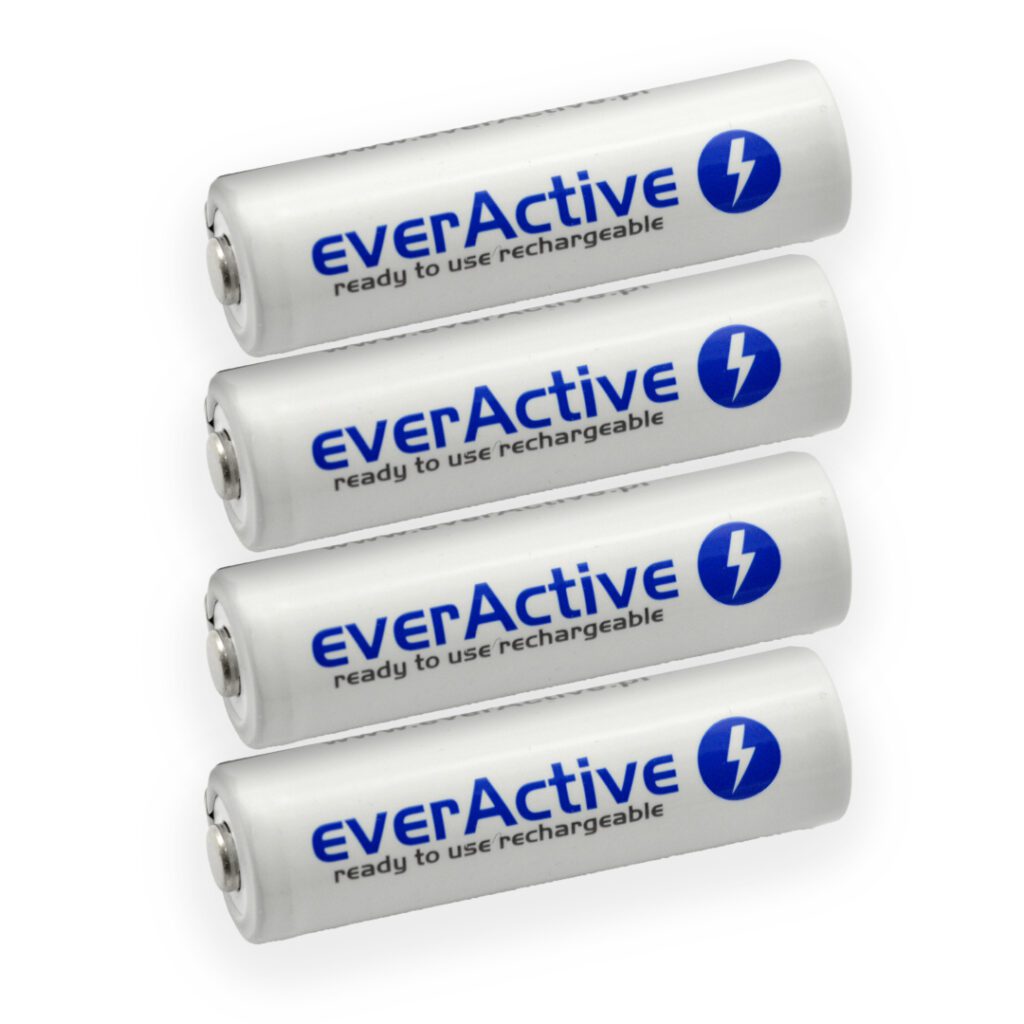Table of Contents:
Have you ever wondered how devices work without having to be plugged in all the time? The answer is rechargeable batteries, and among them Ni-MH models are extremely popular. In this article you will learn more about nickel-metal hydride batteries, how they are built, their benefits and where they are used. Read on to learn more about this versatile technology.
What is a rechargeable Ni-MH battery?
Ni-MH battery
, also known as a nickel-metal hydride battery, is an advanced energy storage technology defined as a type of secondary battery. “Ni-MH” is an abbreviation for Nickel-Metal Hydride, which means “niklowo-wodorkowe” in Polish. They feature exceptional durability and high capacity, making them an ideal choice for a wide range of applications, both in mobile and desktop devices.
Ni-MH battery technology is based on a chemical reaction between nickel and hydrogen. In these Ni-MH batteries, the charging process causes current to flow through the electrolyte, which leads to the formation of nickel hydride. During discharge, hydrogen is released again, converting it back into energy.
This technology is safer and more environmentally friendly than older battery types, such as nickel-cadmium (Ni-Cd) batteries, because they do not use toxic cadmium. Ni-MH batteries can be charged and discharged repeatedly, making them cost-effective and long-lasting.
Construction and operation of the Ni-MH battery pack
Ni-MH battery
, due to its design and performance, is very popular. The central point of this battery is the cell, which consists of two electrodes: positive and negative. The positive electrode is made of nickel, while the negative electrode contains a hydrogen-metal alloy (hence the name hydride). Between them is an electrolyte that allows ions to flow. A distinctive feature of the Ni-MH battery is its significantly higher energy capacity compared to older models.
Now, in terms of the specifics of operation, the Ni-MH battery operates on the principle of reverse redox reactions. During charging, electric current flows through the electrolyte, leading to the formation of nickel hydride. When the battery is discharged, hydrogen is released, converting it back into energy. This performance of the Ni-MH battery means that it can last for a long time without losing performance. These properties make it in many applications, such as:
- Mobile devices (smartphones, laptops),
- cameras,
- electric cars,
- household appliances.
In summary, the design and operating principle of the Ni-MH battery make it a highly efficient and long-lasting solution for energy storage.
Advantages of using Ni-MH batteries
Use of Ni-MH batteries brings many benefits, which are due to their specific design and unique properties. The advantages of such a solution certainly include durability and high capacity, making Ni-MH batteries an ideal choice for many types of devices, such as smartphones, cameras and electric cars. It is precisely because of their high energy capacity that they enable devices to be used for long periods of time without the need for constant recharging.
Using nickel-metal hydride batteries is also an environmental benefit – Ni-MH technology is uniquely considered environmentally friendly compared to older types of batteries, which often contained harmful substances.
In addition, Ni-MH batteries are reusable, which means they can be charged and discharged for a long time without losing their performance. This feature translates into savings, as they do not need to be replaced as often.
In practice, this means not only lower utility costs, but also less environmental impact. All of these advantages make Ni-MH batteries an attractive option for anyone looking for an efficient and environmentally friendly energy source.
Examples of the use of Ni-MH batteries in practice
The applications for Ni-MH batteries are incredibly diverse, in keeping with their unique characteristics and enormous potential. Thanks to its durability, performance and environmental friendliness, the Ni-MH battery has become indispensable in many sectors.
The most common examples of the use of Ni-MH batteries are smartphones and laptops, where meeting the demands of a long-lasting and reliable power source is crucial. In cameras and cam corders, they are superior to other types of batteries due to their high performance and capacity, enabling long-lasting photo shoots without the need for frequent recharging.
The use of Ni-MH batteries in electric cars is a technological milestone, enabling long-distance travel without CO2 emissions. Finally, everyday household appliances such as vacuum cleaners, toys and tools now last longer and are more efficient thanks precisely to Ni-MH batteries.
All these examples only underscore the versatility and effectiveness of Ni-MH battery applications in the modern world.
Comparison of Ni-MH with other types of batteries
Comparing Ni-MH with Li-ion, or lithium-ion, batteries, we see that both types offer long-lasting use for devices. Ni-MH, however, provides more charge cycles, resulting in a longer life, while Li-ion features a higher voltage per cell for faster charging.
On the other hand, if we compare Ni-MH batteries with Pb, or lead acid, batteries, other differences come to the surface. Lead batteries are sometimes heavy and large, which limits their use in mobile devices. Also, because of the harmful substances they are laced with, they are less environmentally friendly than Ni-MH.
In addition, Ni-MH batteries have a higher power density and are more efficient in almost all aspects. The comparison shows that Ni-MH provides an exceptional balance of performance, durability and safety, making it one of the best types of batteries available on the market.
Maintenance and upkeep of Ni-MH batteries
Maintenance and upkeep of Ni-MH batteries are key to prolonging their life. Ni-MH batteries have an exceptional lifespan, but proper maintenance practices can further increase that time.
- The first step is to charge and discharge the battery regularly to maintain optimal performance;
- Avoid overheating the battery;
- store the battery in a dry place, away from heat sources or direct sunlight;
- if the battery is not used for a long time, make sure it is at least 40% charged to prevent loss of rechargeability.
These simple rules for the maintenance and upkeep of Ni-MH batteries will allow you to enjoy their long-term use.
How useful was this post?
Click on a star to rate it!
Average rating 0 / 5. Vote count: 0
No votes so far! Be the first to rate this post.




















